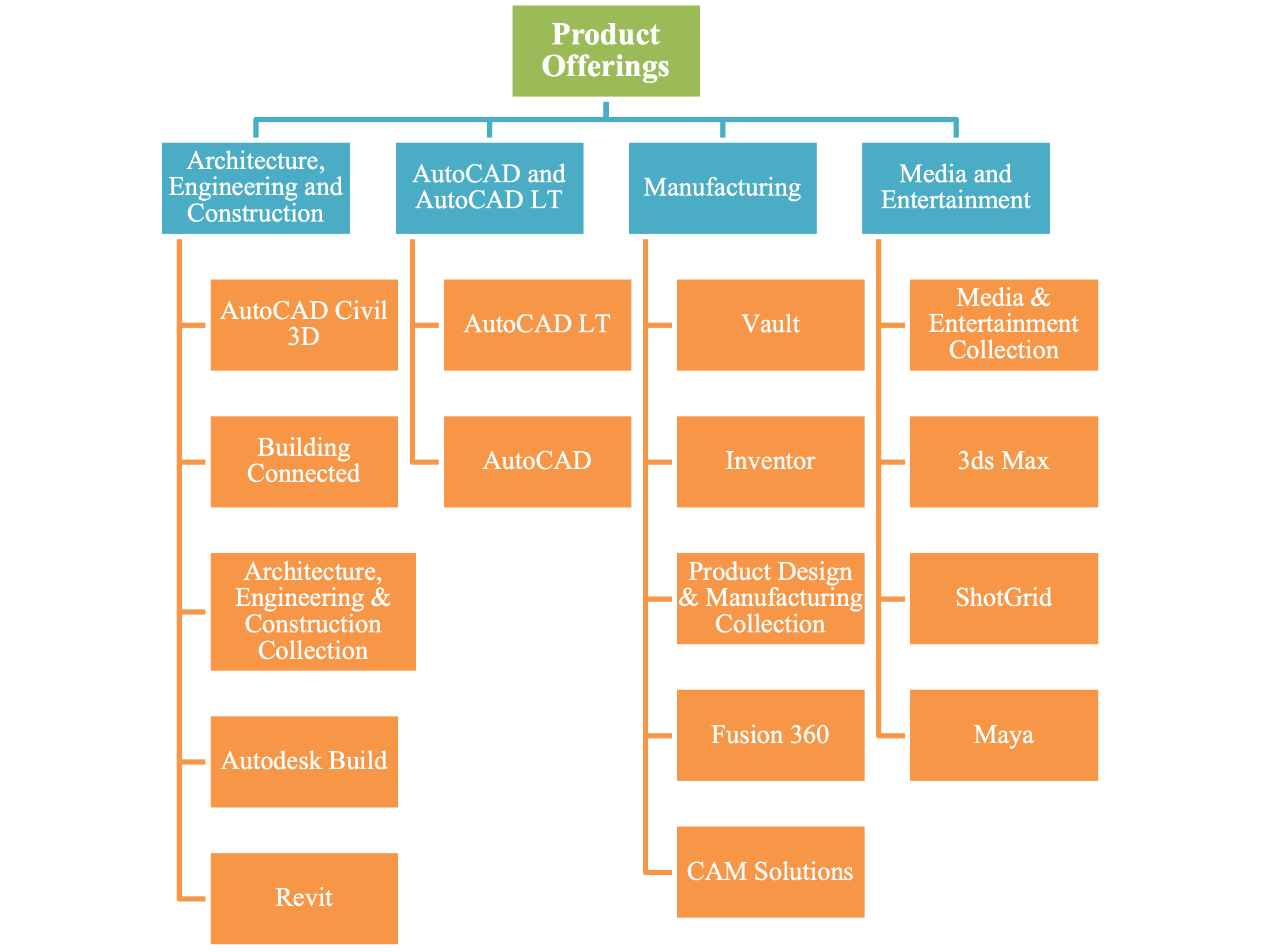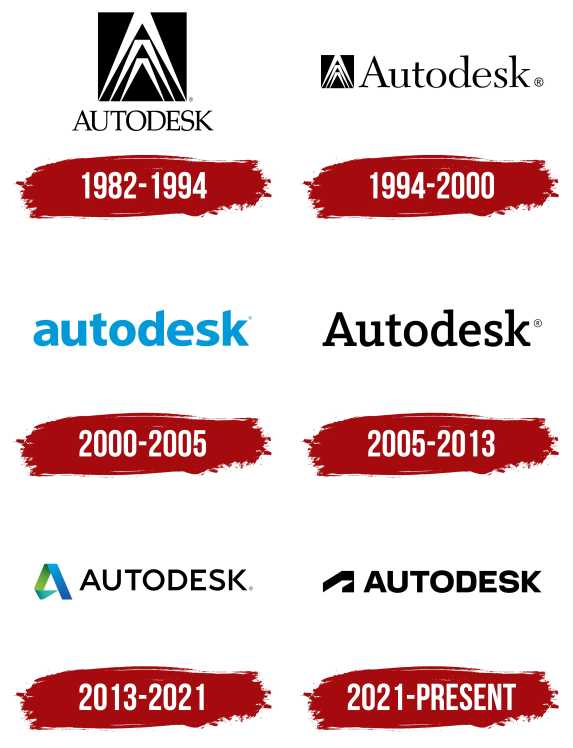Autodesk, Inc.
Summary
- Autodesk, Inc. stands as a global leader in 3D design, engineering, and entertainment technology solutions across various domains, including architecture, engineering, construction, product design, manufacturing, media, and entertainment.
- The Company's software products, accessible through a hybrid of desktop and cloud functionality.
- The company sells its products and services globally through a combination of indirect and direct channels. Indirect channels encompass value-added resellers, direct market resellers, distributors, and other software developers.
- In the fiscal year ending on January 30, 2023, the company witnessed substantial growth in sales, with total sales reaching $5,005 million. This marked an increase of $619 million or 14% compared to the sales figure of $4,386 million in the fiscal year ending on January 30, 2022.
- The company's gross profit for 2023 amounted to $4,525 million, reflecting a difference of $557 million or 14% from the gross profit of $3,968 million in the previous year, 2022.
- Additionally, the company's operating profit increased in 2023, totaling $989 million, which was higher by $371 million or 60% compared to the operating profit of $618 million in 2022.
- The net profit for the year 2023 was $823 million, representing an increase of $326 million or 66% compared to the net profit of $497 million in 2022.
- Moreover, the diluted earnings per share (EPS) for 2023 were reported as $3.78, which showed an increase of $1.54 or 69% compared to the diluted EPS of $2.24 in 2022.
Brief Company Overview
 Autodesk, Inc. (NYSE:ADSK) stands as a global leader in 3D design, engineering, and entertainment technology solutions across various domains, including architecture, engineering, construction, product design, manufacturing, media, and entertainment. The Company's software products, accessible through a hybrid of desktop and cloud functionality, empower its customers to conceptualize, simulate, and analyze real-world performance at the early stages of the design process, facilitating the design, fabrication, manufacturing, and construction of diverse projects. These advanced features enable customers to foster innovation, optimize designs, streamline manufacturing and construction processes, save time and resources, enhance quality, achieve more sustainable outcomes, communicate plans effectively, and collaborate seamlessly with others.
Autodesk, Inc. (NYSE:ADSK) stands as a global leader in 3D design, engineering, and entertainment technology solutions across various domains, including architecture, engineering, construction, product design, manufacturing, media, and entertainment. The Company's software products, accessible through a hybrid of desktop and cloud functionality, empower its customers to conceptualize, simulate, and analyze real-world performance at the early stages of the design process, facilitating the design, fabrication, manufacturing, and construction of diverse projects. These advanced features enable customers to foster innovation, optimize designs, streamline manufacturing and construction processes, save time and resources, enhance quality, achieve more sustainable outcomes, communicate plans effectively, and collaborate seamlessly with others.
The company sells its products and services globally through a combination of indirect and direct channels. Indirect channels encompass value-added resellers, direct market resellers, distributors, and other software developers. Transition agreements have been established with distributors Tech Data and Ingram Micro, outlining a one-to-two-year period for transition distribution activities, with potential extensions. In alignment with these agreements, Autodesk aims to enhance its selling efforts with value-added resellers and agents. Direct channels involve internal sales resources dedicated to selling in major accounts, highly specialized solutions, and transactions conducted through the online Autodesk branded store. The company anticipates ongoing changes in its channel mix as it expands its online Autodesk branded store business and witnesses a shift in its largest accounts towards direct-only business models.

As of December 2023, the company had a 52-week share price range of $259.25 to $188.28. The forwarding P/E ratio of the company is 32.36 times, the price-to-sales ratio (ttm) is 10.39 times, the profit margin is 17.15%, the operating margin is 24.40%, the return on assets (ttm) is 7.95%, the return on equity is 76.80%, and the diluted earnings per share (ttm) is $4.23. As of July 29, 2022 there were approximately 215.8 million shares of the registrant’s common stock outstanding that were held by non-affiliates, and the aggregate market value of such shares held by non-affiliates of the registrant was approximately $47.0 billion. As of March 7, 2023, the registrant had outstanding 214,782,702 shares of common stock.
Recent Developments
- In the third quarter of 2024, Autodesk forged an alliance with Pixar, Adobe, Apple, and NVIDIA. In collaboration with of construction payment and compliance management solutions. This strategic move is part of the construction industry's ongoing digital transformation, addressing challenges related to late payments and cash flow constraints. By integrating Payapps' best-in-class cloud offerings, Autodesk aims to provide more efficient, transparent, and compliant payment processes, ultimately improving the construction industry's workflows and facilitating greater collaboration among project stakeholders.1
- In the second quarter of 2023, Autodesk forged an alliance with Pixar, Adobe, Apple, and NVIDIA. In collaboration with the Joint Development Foundation (JDF), affiliated with the Linux Foundation, they announced the formation of the Alliance for OpenUSD (AOUSD). This alliance aims to advance the standardization and development of Pixar's Universal Scene Description (USD) technology, promoting interoperability and growth within the 3D ecosystem. Chaired by Pixar's CTO Steve May, AOUSD will focus on developing specifications for OpenUSD, facilitating wider adoption and integration, and serving as a collaborative forum for industry-wide contributions to the evolution of this high-performance 3D scene description technology.2
Recent Financing Activities
- During the first nine months of fiscal 2023, Autodesk repurchased around 4.4 million shares at an average price of approximately $200 per share.3
Financial Performance Highlights
Q3 2023 Highlights
In the third quarter ending on January 30, 2024, the company reported sales of $1,414 million, indicating an increase of $96 million or 7.3% compared to the third quarter ending on January 30, 2023, which recorded sales of $1,318 million. The net profit for the third quarter of 2024 was $241 million, reflecting a decrease of $52 million or 17.7% when compared to the net profit of $293 million in the third quarter of 2023. Furthermore, the company's diluted earnings per share (EPS) for the third quarter of 2024 decreased to $1.12, a negative change of $0.23 or 17% compared to the diluted EPS of $1.35 in the third quarter of 2023.
Annual Performance Highlights
In the fiscal year ending on January 30, 2023, the company witnessed substantial growth in sales, with total sales reaching $5,005 million. This marked an increase of $619 million or 14% compared to the sales figure of $4,386 million in the fiscal year ending on January 30, 2022. The company's gross profit for 2023 amounted to $4,525 million, reflecting a difference of $557 million or 14% from the gross profit of $3,968 million in the previous year, 2022. Additionally, the company's operating profit increased in 2023, totaling $989 million, which was higher by $371 million or 60% compared to the operating profit of $618 million in 2022. The net profit for the year 2023 was $823 million, representing an increase of $326 million or 66% compared to the net profit of $497 million in 2022. Moreover, the diluted earnings per share (EPS) for 2023 were reported as $3.78, which showed an increase of $1.54 or 69% compared to the diluted EPS of $2.24 in 2022.
In the fiscal year ending January 31, 2023, the company experienced significant growth in net revenue across its primary product families. The Architecture, Engineering, and Construction (AEC) product family saw a substantial increase of $309 million or 16%, attributed to growth in revenue from AEC Collections, EBAs, Revit, and Autodesk Build. AutoCAD and AutoCAD LT exhibited an increase of $143 million or 11%, driven by growth in revenue from both AutoCAD and AutoCAD LT. The Manufacturing (MFG) product family recorded a growth of $102 million or 12%, attributed to increased revenue from MFG Collections, Fusion360, Vault, and EBAs. Similarly, the Media and Entertainment (M&E) product family experienced growth of $32 million or 12%, driven by increased revenue from Maya, 3DS Max, and M&E Collections. Additionally, the "Other" category showed substantial growth of $33 million or 87%. These positive changes reflect the company's effective strategies and market demand for its diverse product offerings, reinforcing its overall financial performance.
Operating Activities: In fiscal 2023, the company reported net cash provided by operating activities amounting to $2,071 million. This figure was primarily composed of $823 million in net income, adjusted for non-cash items totaling $556 million. These non-cash items included stock-based compensation expense, depreciation, amortization, accretion expense, lease-related asset impairment charges, and deferred income tax. The increase in cash provided by working capital was mainly attributed to a net increase in deferred revenue amounting to $798 million. This rise was propelled by an increase in product subscriptions and EBA offerings. However, this positive trend was partially offset by a change in accounts receivable, amounting to $247 million, influenced by the seasonality of billings in the fourth fiscal quarter and the timing of cash collections from customers..
Investing Activities: Net cash used in investing activities was $143 million for fiscal 2023 and was primarily due to purchases of marketable securities and business combinations, net of cash acquired, partially offset by sales and maturities of marketable securities.
Financing Activities: In fiscal 2023, the company reported net cash used in financing activities totaling $1,487 million. This significant outflow was primarily attributed to activities such as the repurchase of common stock and the repayment of debt
Business Overview
Autodesk's architecture, engineering, and construction products enhance the design, construction, and operation of building, infrastructure, and industrial projects. Their product development and manufacturing software cater to various industries, offering comprehensive digital solutions for design, engineering, manufacturing, and production. Autodesk’s product offerings include:

Architecture, Engineering and Construction (“AEC”)
Autodesk offers a range of solutions within the Architecture, Engineering, and Construction ("AEC") category:
AutoCAD Civil 3D: Addresses civil engineering needs with a model-centric approach for surveying, design, and analysis in land development, transportation, and environmental projects.
Building Connected: A SaaS preconstruction tool integrating real-time construction networks for streamlined subcontractor qualification, bid management, and risk assessment.
AEC Collection: Includes AutoCAD, AutoCAD Civil 3D, and Revit, empowering industry experts in designing, engineering, and constructing high-quality buildings and civil infrastructure projects.
Autodesk Build: Facilitates streamlined workflows in the construction industry with project management and collaboration tools, supporting document management, issue tracking, safety, and quality monitoring.
Revit: Tailored for BIM, Revit enables professionals to design, build, and maintain energy-efficient buildings, fostering collaboration among architects, engineers, and construction firms across various design aspects.
AutoCAD and AutoCAD LT
AutoCAD: Professional design, drafting, and visualization software with customizable tools for diverse fields such as construction, civil engineering, manufacturing, and plant design.
AutoCAD LT: Specialized for professional drafting and detailing, AutoCAD LT facilitates document-sharing without requiring customization, making it compatible with other Autodesk products on the AutoCAD platform.
Manufacturing ("MFG")
In the realm of Manufacturing ("MFG"), Autodesk provides a range of cutting-edge solutions:
CAM Solutions: Autodesk's CAM software, including PowerMill, FeatureCAM, PowerInspect, and PowerShare, leads the industry in offering solutions for CNC machining, inspection, and modeling, enabling efficient production of intricate and innovative products.
Fusion 360: The first 3D CAD, CAM, and CAE tool of its kind, Fusion 360 seamlessly connects the entire product development process on a single cloud-based platform.
Product Design & Manufacturing Collection: Providing access to professional-grade tools like AutoCAD, Fusion 360, Vault, and Inventor, this collection equips users to create outstanding products and compete effectively in the evolving manufacturing landscape.
Inventor: Facilitating the transition from 3D design to digital prototyping, Inventor provides engineers with comprehensive tools for mechanical design, simulation, analysis, tooling, visualization, and documentation. It allows virtual validation of a product's form, fit, and function before physical construction.
Vault: As data management software, Vault streamlines data management, expedites design processes, and enhances collaboration. With integration across over 30 Autodesk design applications, robust revisioning, and access control features, Vault ensures secure sharing of product data, reducing engineering cycle time and minimizing manufacturing errors.
Media and Entertainment ("M&E")
In the realm of Media and Entertainment ("M&E"), Autodesk offers a suite of specialized tools:
Media & Entertainment Collection: This comprehensive collection offers creative tools for end-to-end entertainment creation, catering to animators, modelers, and visual effects artists. Key tools like Maya and 3ds Max empower users to craft compelling effects, 3D characters, and digital worlds.
Maya: Renowned for 3D modeling, animation, effects, rendering, and compositing, Maya is crucial for film and video artists, game developers, and design visualization professionals. It facilitates the digital creation of lifelike images, realistic animations, simulations, visual effects, and full-length animated feature films.
ShotGrid: As cloud-based software for review and production tracking in the M&E industry, ShotGrid serves as a collaborative platform, providing essential business tools for managers and visual collaboration tools for artists and supervisors working globally with distributed teams.
3ds Max: Tailored for game developers, design visualization professionals, and visual effects artists, 3ds Max provides 3D modeling, animation, and rendering solutions. It enables the digital creation of realistic images, animations, and complex scenes, facilitating communication of abstract or intricate mechanical, architectural, engineering, and construction concepts.
Net Revenue by Product Family: ADSK’s product offerings are focused in four primary product families: Architecture, Engineering and Construction (“AEC”), AutoCAD and AutoCAD LT, Manufacturing (“MFG”), and Media and Entertainment (“M&E”).
| Product family | Net revenue in 2023 (in Million $) | Percentage of total revenue |
| Architecture, Engineering and Construction | 2,278 | 45.51% |
| AutoCAD and AutoCAD LT | 1,387 | 27.71% |
| Manufacturing | 978 | 19.54% |
| Media and Entertainment | 291 | 5.81% |
| Others | 71 | 1.42% |
| Total | 5,005 | 100% |
In the fiscal year 2023, the net revenue distribution across these product families was as follows: AEC contributed $2,278 million, accounting for 45.51% of the total revenue; AutoCAD and AutoCAD LT generated $1,387 million, representing 27.71% of the total; Manufacturing yielded $978 million, making up 19.54% of the total revenue; and Media and Entertainment contributed $291 million, constituting 5.81% of the total revenue. The remaining revenue from other sources amounted to $71 million, contributing 1.42% to the total. In summary, Autodesk's total net revenue for the year 2023 was $5,005 million.
Company History
Autodesk, Inc. emerged on the technology landscape on January 30, 1982, in Marin County, California. A small group of visionaries, including founder John Walker, gathered with a transformative idea in mind. John Walker, one of the key figures in Autodesk's formation, famously stated, "the game has changed." The initial years of Autodesk were marked by pioneering efforts in computer-aided design (CAD) software. The company's flagship product, AutoCAD, played a pivotal role in the technological shift from manual drawing to computer-aided design. AutoCAD's capabilities were showcased through early versions like AutoCAD 1.4, circa 1984/85, as evident from sample drawings like the Space Shuttle by Autodesk founder John Walker. These early versions laid the foundation for Autodesk's journey towards becoming a leader in the CAD software industry.
The summer of 1987 marked a significant milestone for Autodesk as it initiated a second stock offering, issuing 2.5 million shares at $24.00 per share. The capital generated from this offering enabled Autodesk to reduce debts and strengthen its financial position. By 1989, Autodesk had firmly established itself, enjoying a 60% share of the market for personal computer automated design software.

The early 1990s marked a period of continued growth for Autodesk. In 1993, the company hosted its first user conference, a precursor to what would later become Autodesk University (AU). This conference provided a platform for designers, architects, and engineers to gather, share insights, and learn from each other. As the 1990s progressed, Autodesk had shipped one million software packages worldwide, and AutoCAD remained a primary source of revenue, accounting for 85% of the company's revenues in 1994.
The late 1990s brought challenges with the release of AutoCAD 13.0 in 1994, plagued by significant flaws that impacted its market reception. Autodesk faced declining sales, registering a 5% drop in the first half of fiscal 1996.
Autodesk entered the online realm in 2001, launching a web portal and introducing Internet-enabled products for collaboration. An online subscription service followed in North America in August 2001, with Europe receiving a similar service in February 2002. The early 2000s marked a period of diversification for Autodesk. The company addressed design software needs across various sectors, including manufacturing, infrastructure, and digital media. Autodesk's Discreet unit, later renamed Autodesk Media & Entertainment, played a crucial role in creating special effects for Oscar-nominated films like Gladiator, Hollow Man, The Perfect Storm, A.I. Artificial Intelligence, Pearl Harbor, and Lord of the Rings.
The mid-2000s saw Autodesk's revenues swelling, surpassing $1 billion in 2005. Autodesk continued to thrive under Bass's leadership, focusing on dynamic growth and technological innovation.
Autodesk continued to evolve in the following years, introducing a new logo at the TED conference in 2013. However, in 2017, the company faced a significant challenge as it announced its largest layoff in history, cutting 1,150 jobs. This move was part of Autodesk's restructuring efforts, reflecting the evolving dynamics of the technology industry.
The year 2021 saw Autodesk updating its logo once again in September, emphasizing the company's commitment to staying current and relevant in the ever-changing technology landscape. As of the latest available information, Autodesk remains a significant player in the software industry, providing a range of design and engineering solutions.
References
- ^ https://itwire.com/guest-articles/guest-opinion/autodesk-signs-definitive-agreement-to-acquire-payapps-for-global-payment-and-compliance-management.html
- ^ https://www.animationmagazine.net/2023/08/pixar-adobe-apple-autodesk-nvidia-form-openusd-alliance-to-drive-open-standards-for-3d-content/
- ^ https://www.prnewswire.com/news-releases/autodesk-inc-announces-fiscal-2023-third-quarter-results-301685521.html




